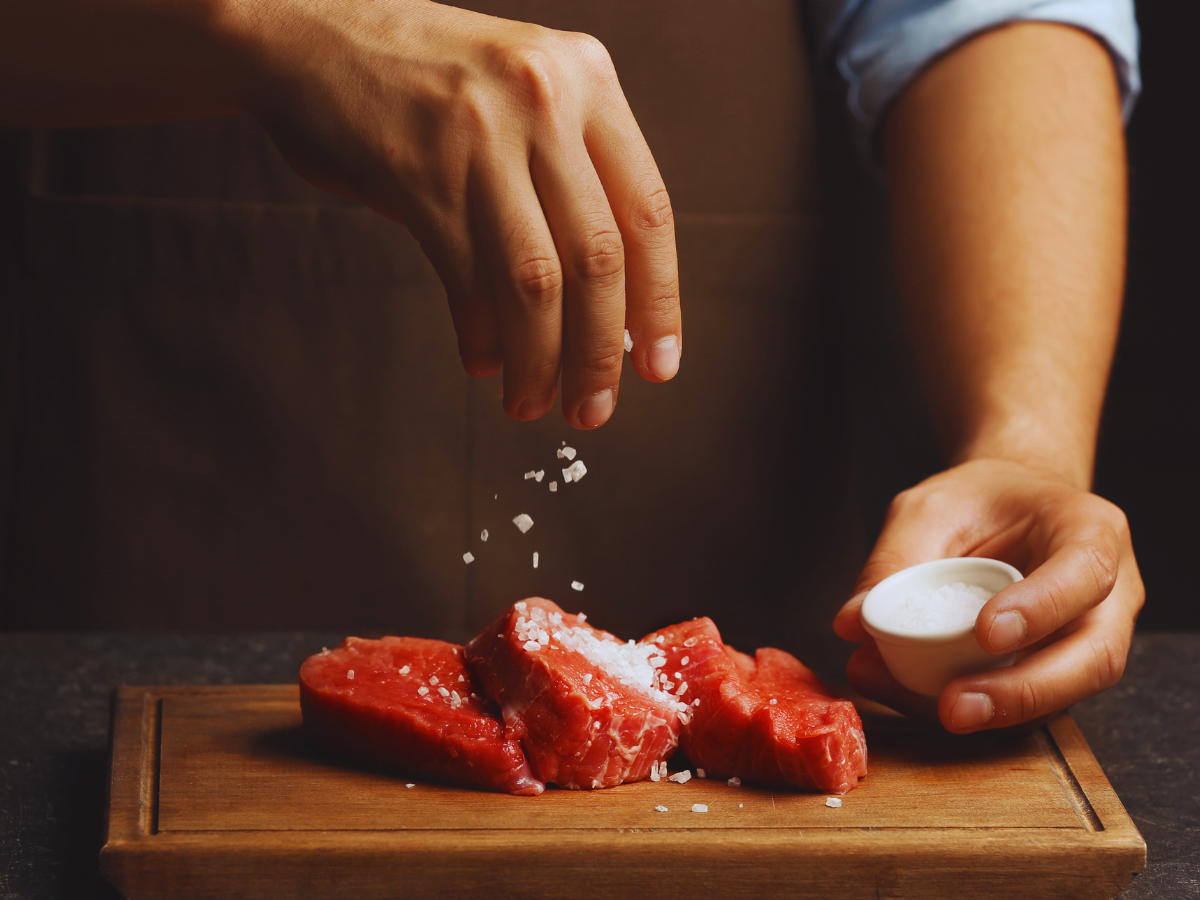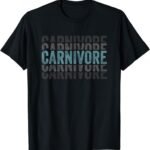
The 80/20 carnivore diet emphasizes consuming 80% animal-based foods and 20% non-animal foods, allowing for flexibility while still prioritizing meat. This approach can help individuals enjoy the benefits of a carnivore diet while incorporating some plant-based foods for variety and additional nutrients, making it more sustainable long-term.
The carnivore diet, known for its emphasis on animal-based foods, has gained significant traction as a method for achieving optimal health and wellness. One intriguing variation within the carnivore community is the 80/20 carnivore diet, where 80% of caloric intake comes from fat and 20% from protein. This high-fat, low-protein approach offers unique benefits and challenges, particularly for those seeking to maximize the metabolic and therapeutic effects of dietary fat.
What is the 80/20 Carnivore Diet?
The 80/20 carnivore diet, specifically focusing on an 80% fat to 20% protein ratio, is a dietary approach that prioritizes fat as the primary source of energy. This means that the majority of your caloric intake comes from animal fats, while a smaller portion comes from protein sources. Unlike the traditional carnivore diet, which often includes higher protein consumption, this variation aims to induce ketosis more effectively and provide sustained energy through fat metabolism.
The Advantages of the 80/20 Carnivore Diet
- Enhanced Ketosis
- The high-fat content in the 80/20 diet promotes ketosis, a metabolic state where the body burns fat for fuel instead of carbohydrates. Ketosis has been associated with numerous health benefits, including improved mental clarity, increased energy levels, and enhanced fat loss.
- Better Appetite Control
- Fat is more satiating than protein, leading to better appetite control and reduced cravings. This can be particularly beneficial for those looking to manage their weight or reduce their overall caloric intake without feeling deprived.
- Anti-Inflammatory Effects
- Consuming a high-fat diet can have anti-inflammatory effects, which are beneficial for individuals with inflammatory conditions. Fats, particularly omega-3 fatty acids found in fatty fish, have been shown to reduce inflammation and improve overall health.
- Improved Hormone Regulation
- Dietary fat plays a crucial role in hormone production and regulation. By prioritizing fat intake, the 80/20 carnivore diet can support hormonal balance, which is essential for overall well-being, particularly for women experiencing hormonal changes such as menopause.
- Sustained Energy Levels
- Fat provides a more sustained and stable source of energy compared to protein and carbohydrates. This can lead to improved endurance, better physical performance, and reduced energy crashes throughout the day.
The Disadvantages of the 80/20 Carnivore Diet
- Risk of Nutrient Deficiencies
- Focusing heavily on fat intake may lead to inadequate consumption of essential nutrients found in protein sources. It’s crucial to ensure a balanced intake of vitamins and minerals to avoid deficiencies that could impact health.
- Digestive Issues
- High-fat diets can sometimes lead to digestive issues such as diarrhea or constipation, particularly during the initial adaptation phase. It’s important to monitor your body’s response and make adjustments as needed.
- Social Challenges
- Adhering to an 80/20 carnivore diet can be socially challenging, especially in situations where high-fat foods are not readily available. Planning and preparation are key to maintaining this dietary approach in social settings.
- Potential for Excessive Caloric Intake
- Fats are calorie-dense, which means it’s easy to consume more calories than needed. Monitoring portion sizes and being mindful of caloric intake are essential to avoiding weight gain.
Daddy’s Pick
Suggestions for Beginners
- Start Gradually
- If you’re new to the 80/20 carnivore diet, consider starting gradually. Begin by incorporating more fatty cuts of meat and high-fat animal products into your meals while slowly reducing protein intake.
- Focus on Quality Fats
- Prioritize high-quality animal fats such as grass-fed butter, ghee, lard, tallow, and fatty cuts of meat. These sources provide essential nutrients and healthy fats that support overall health.
- Monitor the Electrolyte Balance
- High-fat diets can affect electrolyte balance, leading to symptoms like muscle cramps and fatigue. Ensure adequate intake of sodium, potassium, and magnesium through foods or supplements.
- Plan Your Meals
- Planning your meals in advance can help you maintain the 80/20 ratio and ensure you’re getting a balanced intake of fats and proteins. Consider preparing high-fat snacks and meals to stay on track.
- Listen to Your Body
- Pay attention to how your body responds to dietary changes. If you experience any adverse effects, such as digestive discomfort or low energy levels, make adjustments as needed. Everyone’s body is different, and finding the right balance is crucial.
Background of the 80/20 Carnivore Diet
The 80/20 carnivore diet is rooted in the principles of both the ketogenic and carnivore diets. It combines the high-fat, low-carbohydrate approach of the ketogenic diet with the animal-based focus of the carnivore diet. This variation aims to harness the benefits of ketosis while providing the nutrient density and simplicity of an animal-based diet.
Historically, humans have consumed diets high in animal fats, particularly in regions where plant-based foods were scarce. The emphasis on fat for energy is not a new concept but rather a return to ancestral eating patterns. The 80/20 carnivore diet acknowledges the importance of fat in human nutrition and seeks to optimize it for modern health needs.
How the 80/20 Carnivore Diet Fits into the Carnivore Lifestyle
The 80/20 carnivore diet aligns with the carnivore lifestyle by maintaining a focus on animal-based foods while prioritizing fat as the primary energy source. This approach is particularly appealing to those who thrive on high-fat diets and seek the metabolic benefits of ketosis.
For individuals who find the traditional carnivore diet too protein-heavy, the 80/20 variation offers a more balanced and sustainable alternative. It allows for greater flexibility in macronutrient intake while still adhering to the core principles of an animal-based diet.
Specific Recommendations for the 80/20 Carnivore Diet
- Animal-Based Fat Sources
- Fatty Meats: Choose fatty cuts of meat such as ribeye, pork belly, lamb chops, and duck. These meats provide a high-fat content that supports the 80/20 ratio.
- Organ Meats: Incorporate organ meats like liver, heart, and kidney. These are nutrient-dense and provide essential vitamins and minerals.
- High-Fat Dairy: Include full-fat dairy products such as cheese, heavy cream, and sour cream. These can add healthy fats to your diet.
- Supplemental Fats
- Butter and Ghee: Use grass-fed butter and ghee as cooking fats or toppings for your meals. They are rich in healthy fats and provide a buttery flavor.
- Lard and Tallow: Rendered animal fats like lard (pork fat) and tallow (beef fat) are excellent for cooking and add a rich taste to dishes.
- Electrolyte Management
- Ensure adequate intake of electrolytes to prevent imbalances. Incorporate bone broth, which is rich in minerals, and consider supplementing with electrolytes if needed.
- Hydration
- Proper hydration is crucial, especially on a high-fat diet. Drink plenty of water throughout the day to support digestion and overall health.
- Mindful Eating
- Practice mindful eating by paying attention to hunger and satiety cues. This can help prevent overeating and ensure you’re consuming the right amount of calories.
Sample Meal Plan for the 80/20 Carnivore Diet
Breakfast:
- Coffee with heavy cream and a side of bacon
Lunch:
- Ribeye steak cooked in butter with a side of sautéed mushrooms
Snack:
- A small portion of pork rinds with a dollop of sour cream
Dinner:
- Grilled lamb chops with a side of roasted bone marrow
Dessert:
- A serving of whipped heavy cream with a sprinkle of cinnamon
Daddy’s Pick
The 80/20 carnivore diet offers a unique and sustainable approach to animal-based eating, emphasizing the importance of dietary fat for optimal health. By focusing on an 80% fat to 20% protein ratio, this variation of the carnivore diet promotes ketosis, enhances energy levels, and supports overall well-being.
While the 80/20 carnivore diet provides numerous benefits, it also presents challenges, such as the risk of nutrient deficiencies and digestive issues. By starting gradually, prioritizing quality fats, and listening to your body’s needs, you can successfully navigate these challenges and enjoy the advantages of this dietary approach.
Whether you’re new to the carnivore lifestyle or seeking to optimize your current diet, the 80/20 carnivore diet offers a flexible and balanced way to achieve your health goals. Embrace the benefits of dietary fat, enjoy the simplicity of animal-based eating, and experience the transformative effects of the 80/20 carnivore diet on your journey to optimal health.
Exclusive Offer
READ MORE


